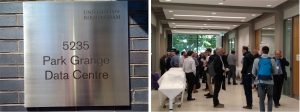
On 21st June 2018, the Advanced Research Computing (ARC) team celebrated the launch of our new Research Data Centre. As the first purpose built, water-cooled, research focussed UK Data Centre, Data Centre Managers and architects of HPC systems were keen to attend and find out more about this ambitious project. The day had a technical focus and was aimed at those responsible for running Data Centres who were interested in the challenges faced from high density computer systems. It was sponsored by our technology partners Lenovo and OCF.
John Owen and Simon Thompson from the ARC team led the presentations, outlining the need for a new Data Centre and the benefits of using water cooling. Our new Data Centre is the first and only UK deployment of the Lenovo direct to node system. Scott Tease, (Executive Director for HPC and AI) from Lenovo described the 3 water cooling products they provide including the rear door heat exchangers and direct to node cooling our new data centre uses, which allow denser compute and big savings in power usage.
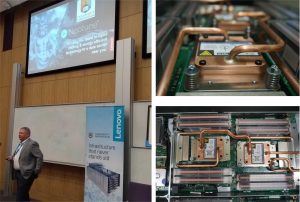
There were some audience questions covering the mix of electricity and water, however there are safe guards in place such as the unique, drip-free connectors, leak detection and use of copper piping rather than plastic.
This was followed by a series of talks from Estates Project management, the Contractors and Engineers who outlined the many challenges in the build including gas pipes in the wrong place, trees, badgers, snow and the proximity of the canal to name a few!
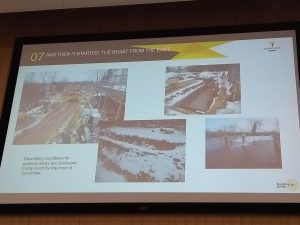
After lunch and a delicious and amazingly decorated water (or gin?) cooled cake with very appropriate eco-friendly roof courtesy of our partners OCF, the researchers provided examples of how they make use of our compute and storage.
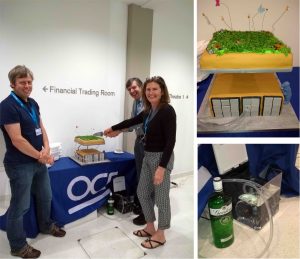
Dr Iain Styles from Computer Science (COMPARE project) discussed how the rapid innovations in microscopy technology are leading to an increasing dependency on compute, both for storing and analysing the increasing amounts of data produced. An example given was imaging one cell for a couple of hours using live cell light sheet microscopy can lead to more than 1TB of resulting data.
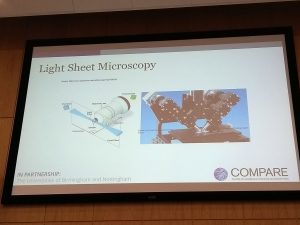
Dr Jonathan Radcliffe then described how he uses our compute to investigate energy storage – we will need to store more energy in the future to cope with a variable energy supply as we move to decarbonised electricity.
In parallel with the research showcase, the attendees were treated to an exclusive tour of the new Data Centre where they could feel just how we’ve challenged the norm of data centres by elevating the ambient air temperature to nearly 30C. Great interest was taken in the zero-drip water connectors and the innovative power bars which allow modular connection. We even demonstrated the temperature difference over the rear door by opening a few for short periods of time.
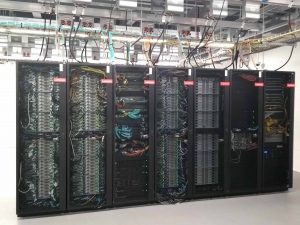
The new Data Centre provides the University with a long-awaited ability to grow our IT infrastructure to support research. With ambitious University research targets and an ever growing demand for high powered computing and data storage, we are now well positioned to meet (some of) the demands which will inevitably occur during the coming years.

1 thought on “The launch of our new Research Data Centre”
Comments are closed.